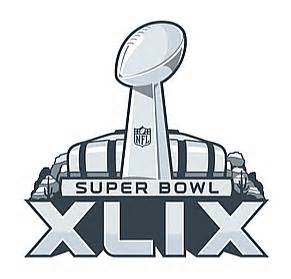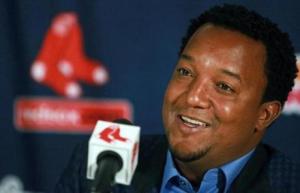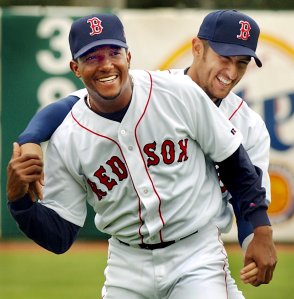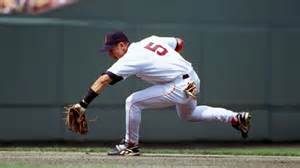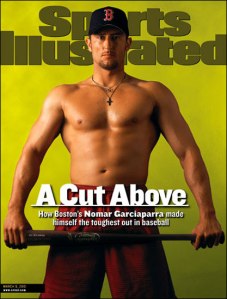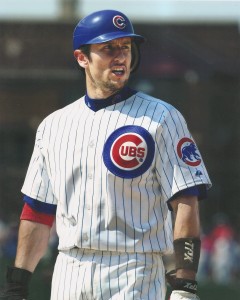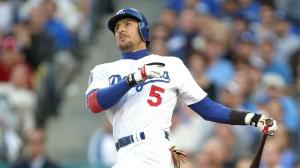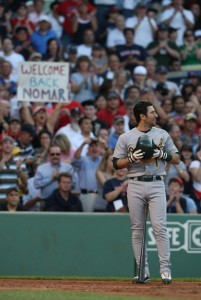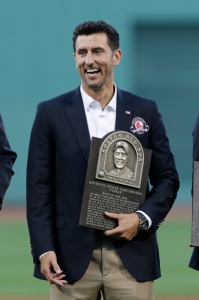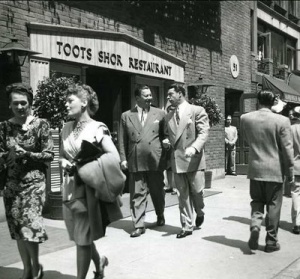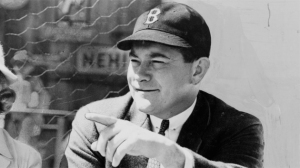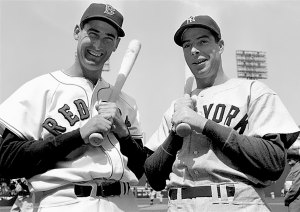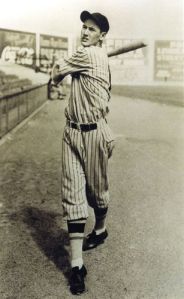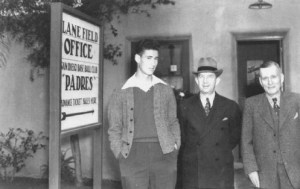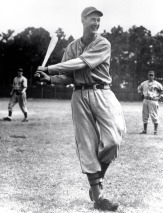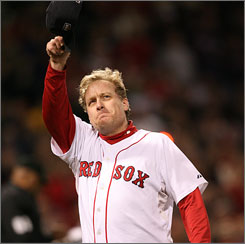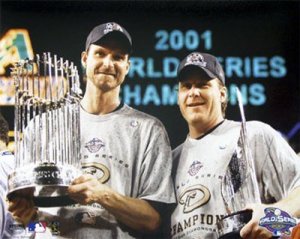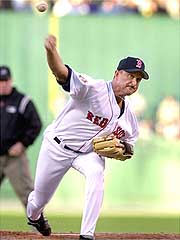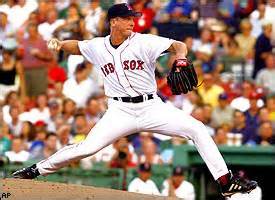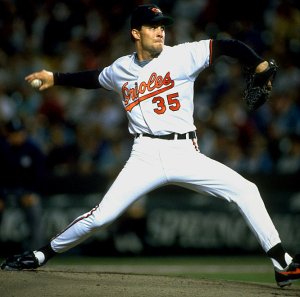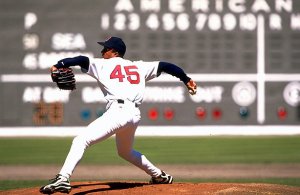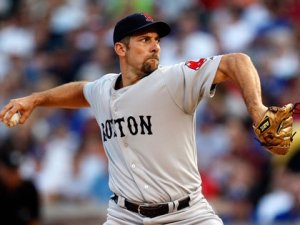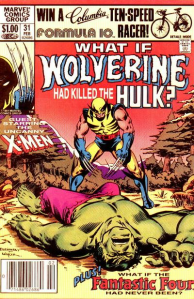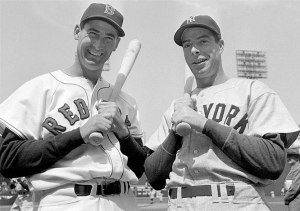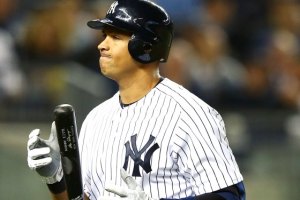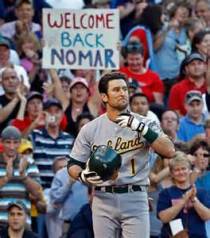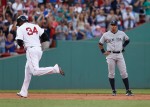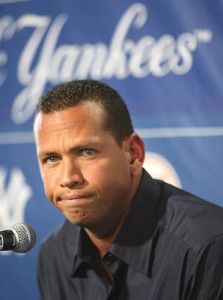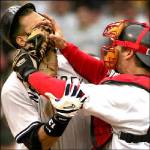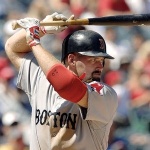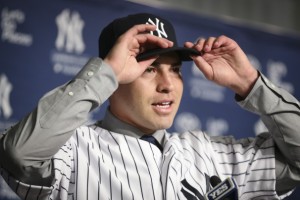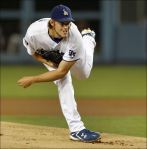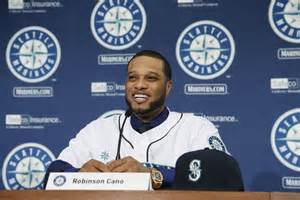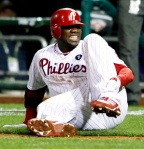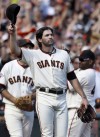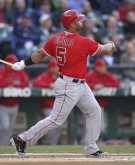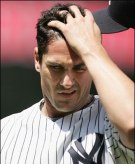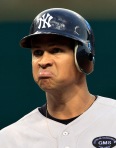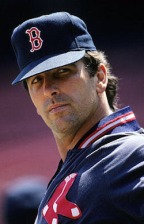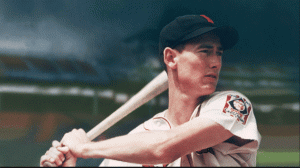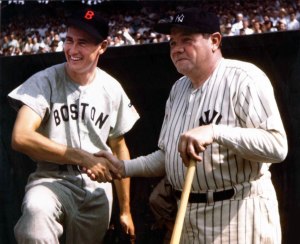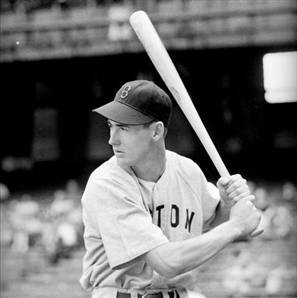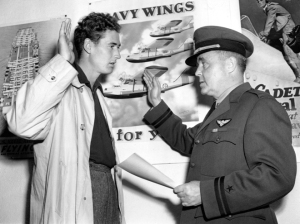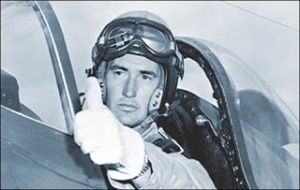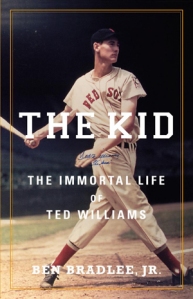David Price and the best uniform numbers ever
From ESPN Boston: David Schoenfield, ESPN Senior Writer
David Price was officially introduced as a member of the Boston Red Sox on Friday. Price has worn No. 14 throughout his career — with Tampa Bay, with Detroit and with Toronto — but that number is retired in Boston in honor of Hall of Famer so Jim Rice so he chose No. 24.
That’s a pretty storied number in Red Sox history. Dwight Evans — a better player than Rice but not in the Hall of Fame — wore it from 1973 to 1990 and he’s one of the most popular players in Red Sox history. But the Red Sox only retire the numbers of Hall of Famers, so five players have worn it since Evans. One of those was Manny Ramirez, who wore it from 2001 to 2008.
That got me to thinking: What’s the greatest jersey number for one team? By that, I mean worn by more than one great player. Here are some nominees:
- Boston Red Sox No. 24: Dwight Evans, Manny Ramirez, David Price. Total WAR: 99.4 and counting. (That WAR is only for the players listed and only while with the Red Sox; many others have worn the number, but I’m looking at major stars only. Good luck if you want to invest the time for all players.)
- New York Yankees No. 8: Bill Dickey and Yogi Berra. Two Hall of Fame catchers, the number is now retired. Total WAR: 112.3.
- New York Yankees No. 9: Roger Maris, Graig Nettles, Hank Bauer, Charlie Keller and Joe DiMaggio. The number is retired in Maris’ honor, although Nettles, Keller and Bauer each accumulated more WAR while with the Yankees. DiMaggio wore No. 9 as a rookie before shifting to No. 5. Total WAR: 145.6 (using just the one season for DiMaggio). Might be hard to beat that total.
- Chicago Cubs No. 31: Fergie Jenkins and Greg Maddux. Two Hall of Fame right-handers, the number is now retired in honor of both. Total WAR: 87.1.
- Seattle Mariners No. 51: Randy Johnson and Ichiro Suzuki. Who gets ultimate retirement honors? I’m guessing the Mariners will retire it in honor of both once Ichiro makes the Hall of Fame. Total WAR: 96.1.
- Detroit Tigers No. 3: Alan Trammell, Dick McAuliffe, Ian Kinsler, Mickey Cochrane (1934-1937), Charlie Gehringer (1931). This is interesting since two Hall of Famers wore it for a short period plus Trammell, who should be in the Hall of Fame, and McAuliffe, a three-time All-Star. Total WAR: 132.8.
- Pittsburgh Pirates No. 21: Arky Vaughan and Roberto Clemente. Total WAR: 147.8. Vaughan is a Hall of Famer, one of the most underrated players of the 1930s. He wore No. 21 with the Pirates from 1932-1939 and then changed to No. 3 and then No. 5 for some reason. I included only his 1932-1939 WAR but that was enough to push this duo above the Yankees’ No. 9 guys.
- San Francisco Giants No. 25: Bobby Bonds and Barry Bonds. Total WAR: 150.3. Barry accounts for 112.3 of that. Not included: Dan Gladden. But if you throw in 19.3 WAR from Whitey Lockman you’re up to 169.6.
- Los Angeles Dodgers No. 6: Carl Furillo, Ron Fairly and Steve Garvey. No Hall of Famers, but three good players. Garvey’s number is retired, oddly enough, by the Padres but not the Dodgers. Total WAR: 84.5.
- New York Yankees No. 15: Red Ruffing, Tommy Henrich (1946-1950), Tom Tresh, Thurman Munson. The number is retired for Munson, although Ruffing is in the Hall of Fame. Total WAR: 125.5.
- Los Angeles Angels No. 27: Vladimir Guerrero and Mike Trout. Vlad played with the Angels for only six seasons, but he did win an MVP award wearing No. 27. Hmm, how many teams have had two different players win an MVP award wearing the same number? Total WAR: 60.7 and counting.
By this measure, Bonds and Bonds is enough to make the Giants’ No. 25 the best number ever. Did I miss any other candidates? You can go to Baseball-Reference.com to check out the number history for each franchise.
____________________________________________
Okay, I’ll buy some of this, makes for great social media-war type stuff, but I think under these conditions, it’s just too simple and doesn’t really get into the actual subject matter of “Best Number”. Sure, it’s about the number and not the actual players who wore them outside of their WAR, I can see that, but being a bit more traditionalist… eh. How much of the actual Barry Bonds numbers can you, PED use aside, factor into the #25
argument? As the Riddler once said, “Too many questions…”
24 is actually one of my fave Red Sox numbers, mainly for Dewey and
having grown up watching him until his final year in Baltimore (yes, Dwight Evans played a year for the Orioles). I was heartbroken when Manny wore it, simply because it was Dewey’s and it should have been Dewey’s… ’nuff said. Yes other players had worn it between them and since, but again, I don’t really look at Kevin Mitchell’s short stint patrolling the famous Fenway RF in #24 as anything dramatic, nor anyone else’s stints.
But added up WAR aside… how do you get past 9? Sure that’s based on the player who wore it but still… Teddy Ballgame as a singular baseball individual, never mind war hero (as well as WAR hero in stats terms) and American Icon (yes, he was a foul-mouthed bastard but his legacy goes well beyond that, Thank You) who still overshadows the combined three individuals mentioned in the above article. And yes, Dwight Evans is HOF worthy, just was never the ‘Superstar’ of the team as he played with Yaz, Fisk, Rice, Boggs (all HOF) and the likes of Roger Clemens, Fred Lynn, Tony Pena and other lightning rods for the press. He never had a long collection of league-leading years but trended upwards during the latter half of that career. That however, is an argument that has been made and shall be made again…

Oh, NOTE: Yes, the Red Sox have made it policy that retired numbers are an honor for players who played 10 years in the uniform, retired with the team and made the HOF… except Johnny Pesky, whose 4.2 billion years of service to the organization merited his #6 be retired.

I’ve made a case for the Red Sox to implement an ‘Honored’ number selection, where specific player’s numbers are posted with their names in road jersey style upon the center field interior of the bleachers wall, keeping that number in uniform rotation but still paying homage to the player. Example: 21 Clemens in Navy Blue numbers/letters (or Red depending on the away jersey style you prefer… I liked the original non-name roadies and the 2009 to 2013 version), 26 Boggs or 24 Evans, etc., This keeps the number in rotation (though 21 may never be worn either way… as it should be, all the PED rhetoric aside, Rocket’s Sox years were his prime HOF years) but still gives the deserved recognition to those who wore it before. The Toronto Maple Leafs have had such a system in place for years.
Just my humble opinion.
p.s. If the continuing embargo versus career DH’s in the HOF, where will this leave Big Papi in the retired number conversation??


